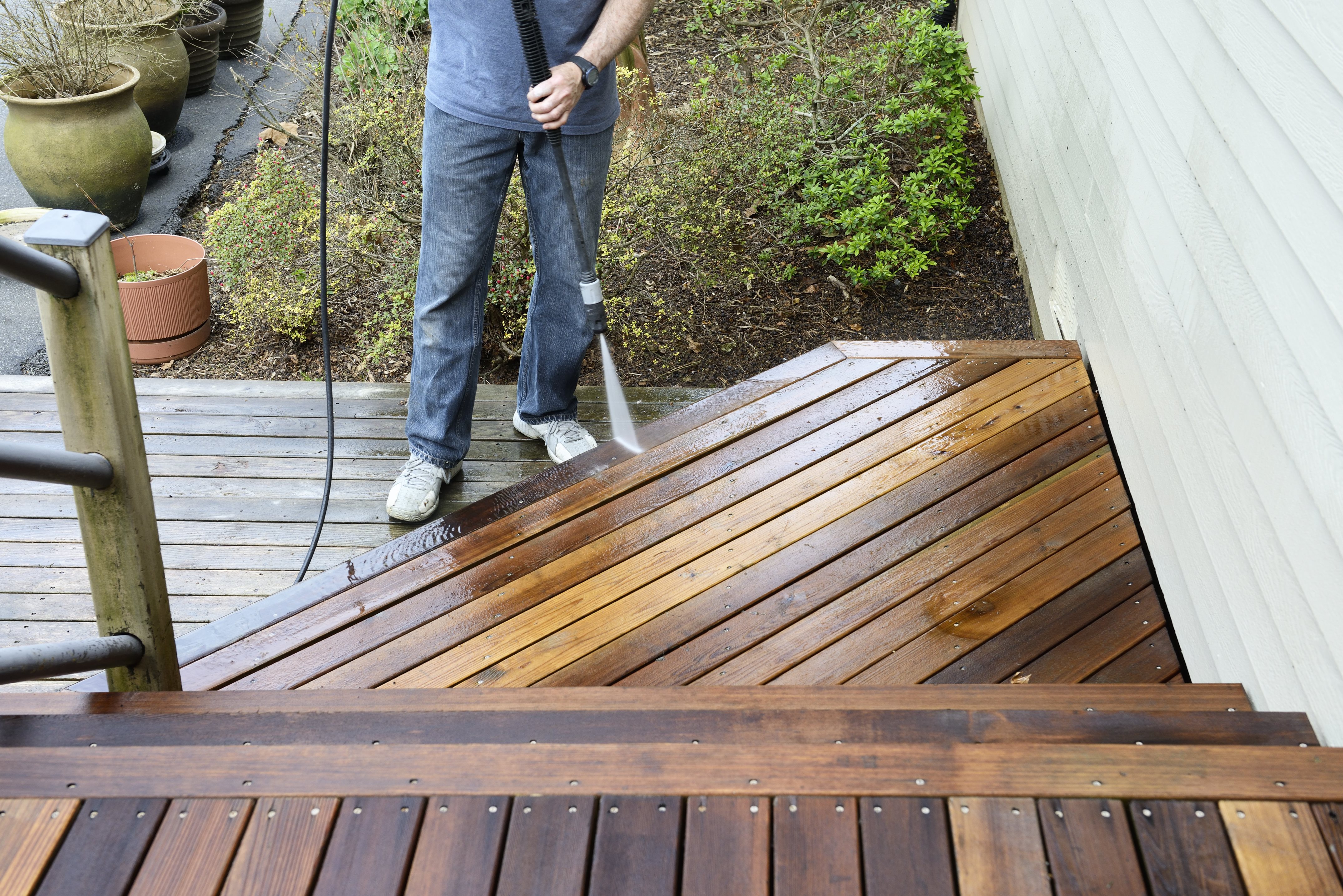


As seen in the May issue of The Paint Contractor
Deck restorations are one of the most common home renovation projects that contractors and homeowners take on every year. Decks increase the available space of a home, have historic significance, and set the stage for outdoor entertainment. A study called the “Remodeling Cost vs. Value Report” lists wooden decks as increasing the value of a home and with an estimated cost recoup at around 80%. With that considerable of a return, we want to ensure that we’re using the best products to protect and refinish our decks.
For a deck that balances pleasing aesthetics with a fortified lifespan, it’s best to focus on these three considerations:

A popular style for decks is a transparent coat that exposes the wood’s grain and organic color. Semi-transparent sealers have a lower opacity that highlights the wood’s natural patterns but the aesthetic comes at a cost. Greater visibility with the naked eye also means that the deck is more exposed to UV radiation. If the deck sits in an area with heavy sunlight it will begin to appear weathered and grayed very quickly. A clear or semi-transparent sealer on a deck like that will likely need refinishing in a year.
A different option that does well in providing UV protection is a solid coating. With the highest level of pigmentation, solid coatings will opaquely cover the wood grain, preventing damage. Greater opacity also gives homeowners more freedom in choosing decorative colors for their deck. A solid-coatings finish should last on average about five years.

Coatings can be water based (acrylics, latex), oil based (alkyds), or a mixture of the two. As decks age they become more porous and will soak up water like a sponge if left unprotected. Experiencing rain, snow, freezing, and thawing, wooden decks will raise, cup, and split from the absorbed water. Different coatings will inhibit water absorption, but ultimately when a coating fails it can weaken the deck in new, targeted ways.
Oil-based coatings were the original favorite in restoring decks due to their ability to deeply penetrate the wood, but they are high in VOCs. Traditional acrylic coatings are a more environmentally-sound option but have a greater tendency to form film finishes which can crack and trap water under their surface. Today chemical-coating improvements have allowed for an improved acrylic formula that combines the benefits of oil-based and water-based products. The most important tip to remember when applying a coating is that over application can still render any coating with a film finish.

Upkeep of a deck is partly dictated by the area’s climate and the type of coating that was applied. Oil-based coatings will naturally erode with time so prep-work before refinishing is minimal; however the organic compounds in the oil can cause new troubles. Mildew and algae will feed on the oils in the coating and a wooden deck in a humid climate can quickly turn green and blacken from these nuisances.
Water-based coatings will chip and peel so when it’s time to recoat a deck it will need to be completely stripped. It’s another step in the process but layering new coatings on top of a damaged sealer will create more problems later. A unique benefit of water-based coatings is that they can be easily cleaned with soap and water so daily upkeep isn’t a burden.
If a wooden deck is in poor shape, applying an acrylic, solid-color coating will be the homeowner’s best option. It provides greater versatility in color choice, disguises the deck’s age, and can be used regardless of what kind of coating was first applied. For serious deck restoration on a budget, a solid textured coating can fill cracks up to a quarter of an inch wide and lock down splinters, allowing a deck to be salvaged and refinished instead of completely replaced.
What kind of deck do you have, and how do you maintain it?
Posted on 09/18/2015 at 08:11 AM